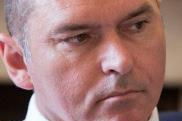Dr Mike Roddis highlights the importance of moral leadership in the NHS following the events at Mid Staffordshire and Morecambe Bay and uses case studies to illustrate next steps for creating ethical organisations
This is not proving to be an auspicious year for the NHS. The combination of wholesale government reform, financial strain and confusion surrounding the fate of specialist heart units following the “flawed” Safe and Sustainable Review have contributed to a torrid few months.
‘There must also be a moral dimension to leadership that prioritises patient welfare above other concerns’
Most damaging has been the aftermath of the events at Mid Staffordshire and the revelations about University Hospitals of Morecambe Bay Foundation Trust. In both instances, it has emerged that senior managers and the Care Quality Commission did not properly address serious failures. The Morecambe Bay revelations prompted Professor John Ashton, incoming president of the Faculty for Public Health, to speak of a crisis of moral leadership in public life.
So what are the challenges of providing moral leadership in healthcare organisations? What are some of the conflicting tensions which surface when difficult decisions have to be made, and how can these be resolved to create more ethical organisations?
A moral crisis? You decide
Case 1 – an attempted cover-up
A consultant surgeon made an error that led to the death of a patient on the operating table. However, when he went to break the news to the patient’s family he did not tell them about the error and instead suggested that the patient’s GP was to blame for not acting sooner.
The relatives decided to report the GP to the GMC and requested a copy of the patient’s notes. When they realised the consultant had not been honest, the family withdrew their complaint against the GP and instead made a complaint against him to the hospital and the GMC. The consultant refused to cooperate with the disciplinary investigation and was eventually sacked for gross misconduct. He was later erased from the medical register.
Case 2 – failure to learn lessons
A trust began a case investigation into a consultant after he made a series of errors in patient care. It was clear the trust’s induction and management procedures had contributed to the problem by not providing the doctor with the necessary support. However, trust managers initially resisted accepting that the organisation had contributed to what had happened or learning any lessons from the inquiry.
It was only after the doctor had left the trust that managers received and accepted separate advice about its induction procedures that prompted them to make changes.
Case 3 – rebuilding trust
A junior doctor was carrying out a procedure under supervision when he made a mistake that resulted in the death of a young patient. The grieving family made a complaint but despite a series of meetings with the trust it was no closer to being resolved.
Eventually the medical director suggested to the family that there must be something they expected from the trust that had not been done. It was clear to him the family were still angry but were having difficulties in expressing this in their dealings with the trust. He gently asked them whether they were upset that the junior doctor had remained in his post.
This opened up the discussion and finally allowed the family to express their frustration that no one had been held accountable for their daughter’s death. It also allowed the medical director to explain the reasons why the doctor had not been dismissed and the steps taken to improve his practice. When the family accepted the opportunity to question the trust about the positive steps it was taking to prevent the same thing happening again, they felt able to accept the trust’s apology and the complaint was resolved.
Leadership in the spotlight
In the last few years there has been increasing focus on promoting leadership skills in healthcare − from the establishment of the NHS Leadership Academy in 2011 as a centre of excellence for leadership development, to the publication of Leadership and Management for All Doctors by the General Medical Council in 2012.
The message is that effective leadership demands more than the ability to manage precious resources. The most accomplished leaders are able to inspire and (if necessary) compel others to work for a common cause.
However, in organisations that are entrusted to provide compassionate care for the most vulnerable, there must also be a moral dimension to leadership that prioritises patient welfare above other concerns. This aspect of leadership is perhaps the most challenging.
Moral tensions
In her fascinating book Moral Leadership in Medicine, Dr Suzanne Shale interviews medical directors about the difficult leadership decisions they have faced − such as allocating resources or overseeing investigations into failings in care − and then analyses these decisions in moral terms. Her interviewees’ accounts reveal the tensions that can arise when trying to satisfy overlapping responsibilities to patients, staff and the organisation, defined respectively as fiduciary, collegial and bureaucratic proprieties.
‘The next step is for leaders to create ethical organisations that nurture and sustain moral leadership in others, creating a virtuous circle’
If concerns are raised about a doctor, for example, medical directors have to balance their responsibilities towards patients and the organisation with their duty of care towards their employee. Moral leadership, Dr Shale argues, “entails seeking an appropriate balance between what are seemingly contradictory needs and ideals”.
Arguably the most interesting aspect of her work is its consideration of the challenge of providing moral leadership following incidents of patient harm. Here the instinct to protect the reputation of the organisation, and in some cases the doctors involved, may lead to the kinds of defensive response highlighted in the Francis report. This alienates patients and corrodes public trust.
Many trusts apparently struggle to acknowledge that patients or their loved ones should be the moral interlocutor when serious harm has occurred, and many doctors find it hard to cede control to those who have been harmed. This means they must be allowed to define the situation in their terms; explain how it affected them; ask questions about what went wrong; and receive an honest response which is not constrained by the desire to shift blame or avoid legal action (see case example 1).
In giving evidence to the public accounts committee last month, Sir David Nicholson also recognised that there could be too much concern about “reputation management” after care failings came to light. Speaking of his time as a complaints manager, he said: “There is quite a lot of pressure on you as an individual, particularly from your staff, to represent and support your organisation publicly. So they are quite powerful things to combat. My argument is they absolutely have to be combated.”
The practice of moral leadership
Dr Shale defines moral leadership as: “Being astute to the moral connotations of all that is involved in providing care… identifying situations where action is needed to improve or maintain the moral quality of care, and orchestrating the activity of other people to provide a morally appropriate response when one is required.”
In other words, moral leadership starts by showing insight, much as the GMC expects doctors to show insight and reflect on their clinical practice.
The next step is for leaders to create ethical organisations that nurture and sustain moral leadership in others, creating a virtuous circle where moral leadership and an ethical organisational culture are inseparable and mutually reinforcing. The areas to focus on should include:
- Governance procedures: Particularly when it comes to areas such as departmental oversight and investigations into patient safety incidents and complaint handling, where patient welfare should be the primary concern. Such investigations must be fair and transparent and not simply an exercise in apportioning blame (see case example 2). They must also examine whether the systems in place were fit for purpose and ensure lessons are learnt when necessary.
- Rebuilding trust: Where serious failures have occurred that have caused harm, patients and their families should be the moral interlocutors. The emphasis must be on re-establishing trust and not protecting reputations (see case example 3).
- Formal rules of acceptable behaviour: No one should be in any doubt that the rules surrounding personal conduct will be consistently and fairly applied; that no one is exempt; and there are consequences of not following them. Organisations where managers attempt to resolve internal disputes informally or fail to make use of established grievance procedures are effectively giving a green light to unethical behaviour such as bullying.
- Support for staff: Staff in difficulty must be properly supported through occupational health, performance management, appraisal or other forms of professional development. A culture where people are hung out to dry is unlikely to elicit honesty and openness if things go wrong.
- Organisational recruitment and promotion policies: Career advancement should be based on moral awareness as much as strategic planning skills or financial acumen. Consider the use of situational judgement tests in interviews for senior posts to assess candidates’ insight, as well as personal development coaching for those with leadership potential.
Over the years, the fundamental goodness of the NHS has become an article of faith for most British people − an institution in which we can all be justly proud because it exists to serves the public and not its own interests. Apparent cover-ups such as those at Mid Staffordshire and Morecambe Bay may have shaken that faith, but it can be restored if the NHS’s moral leaders make themselves heard.
Dr Mike Roddis is a former consultant pathologist and NHS medical director, and director of Healthcare Performance



























6 Readers' comments